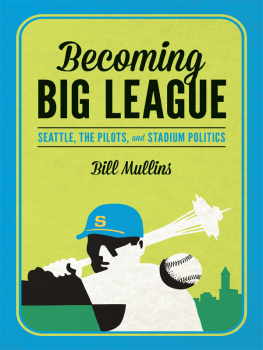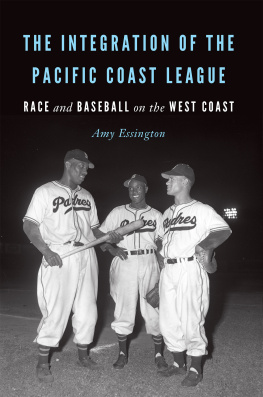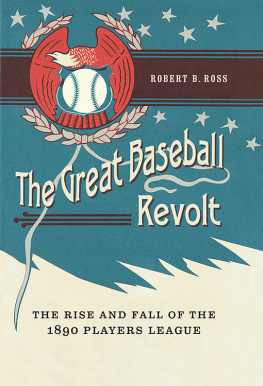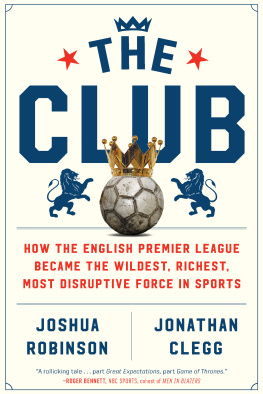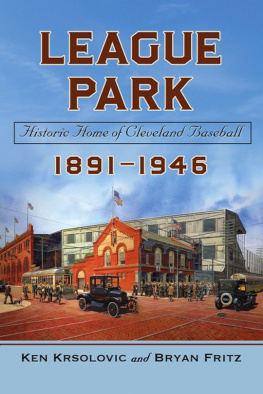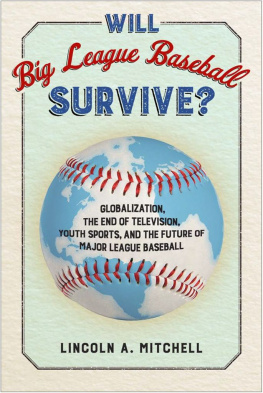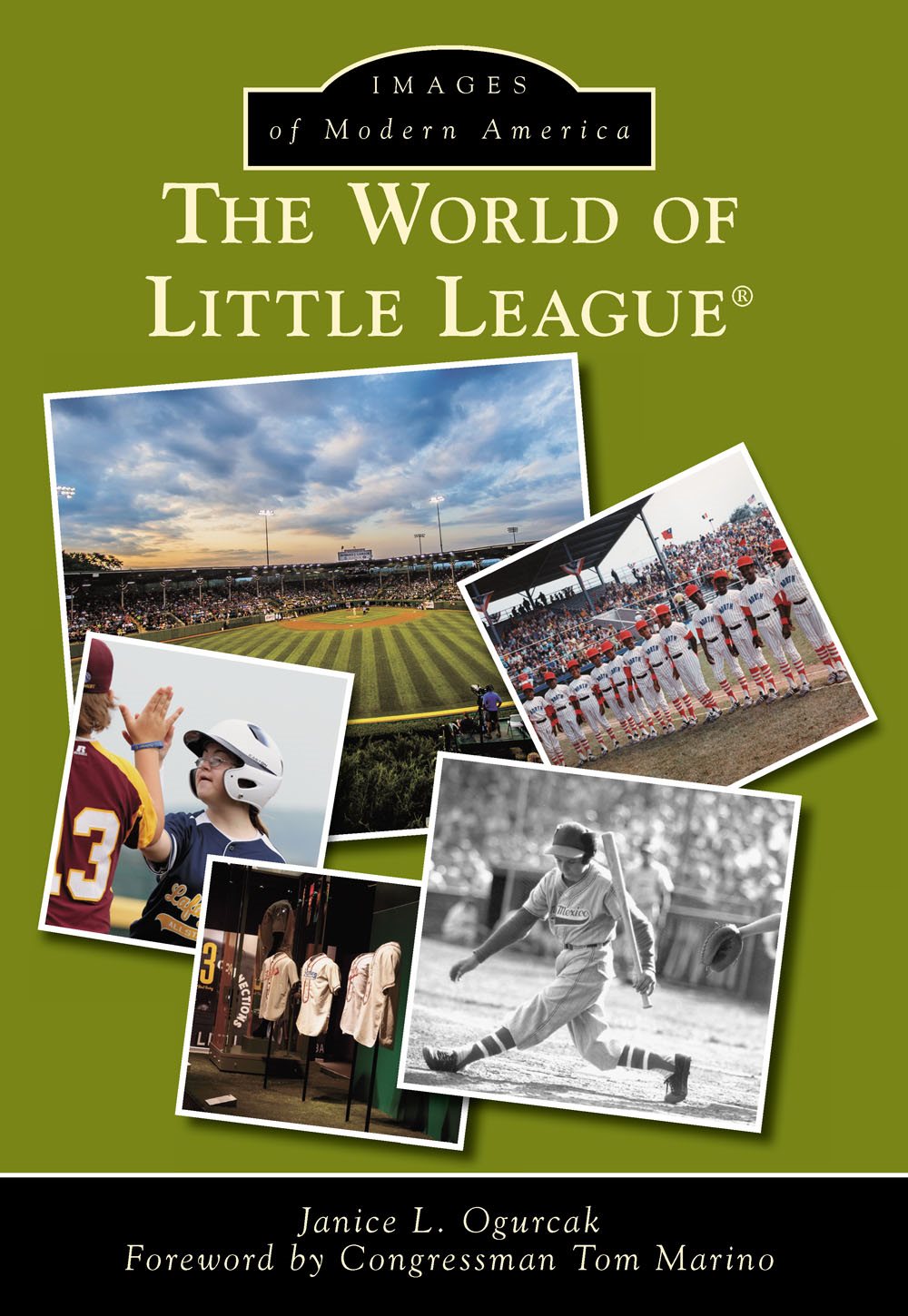
IMAGES
of Modern America
THE WORLD OF
LITTLE LEAGUE
On the Front Cover: Clockwise from top left:
Howard J. Lamade Stadium in South Williamsport, Pennsylvania, during the 2014 Little League Baseball World Series (LLBWS); the 1971 team from Gary, Indiana, the first World Series team comprised solely of African American boys (see ); Challenger Division player and her buddy (All courtesy of the World of Little League Museum Archives)
On the Back Cover: From left to right:
Umpire and player from Japanese team bowing ceremoniously during a game at the Little League International Complex in South Williamsport, Pennsylvania, in 1962; Viewing Plaza with the flags of teams playing at the Little League Baseball World Series; Dugout, Little Leagues mascot, with Little League Baseball World Series players prior to a game (All courtesy of the World of Little League Museum Archives)
IMAGES
of Modern America
THE WORLD OF
LITTLE LEAGUE
Janice L. Ogurcak
Foreword by Congressman Tom Marino

Copyright 2015 by Janice L. Ogurcak
ISBN 978-1-4671-2361-7
Ebook ISBN 9781439652343
Published by Arcadia Publishing
Charleston, South Carolina
Library of Congress Control Number: 2014957990
For all general information, please contact Arcadia Publishing:
Telephone 843-853-2070
Fax 843-853-0044
E-mail
For customer service and orders:
Toll-Free 1-888-313-2665
Visit us on the Internet at www.arcadiapublishing.com
This book is dedicated to my husband, Richard, who supports my ventures and adventures.
CONTENTS
FOREWORD
When Janice Ogurcak asked me to write a foreword for her book, I immediately said yes. It rates right up there with throwing out the ceremonial first pitch of the game, which I have done.
I remember my very first Little League Baseball World Series game: that was 57 years ago. Mexico defeated California. I tell anyone who will listen that Little League Baseball World Series is the best baseball that they will ever experience, especially in South Williamsport, Pennsylvania.
I played Little League Baseball, most of us did. I was a pitcher, a southpaw. If one reads this book, no explanation is required as to what that means. However, that was when bats were made of wood, there were no night games because the fields did not have lights, and there was no 10-run rule. All of that has changed. Nevertheless, I love the game even more.
Baseball is the quintessential all-inclusive human entertainment. The fans, on occasion, are known to get a bit enthusiastic, especially if ones team loses. Regardless, it is truly genuine Americana.
For those of you who have not seen a Little League Baseball World Series game, add it to your bucket list. In fact, put it at the top to enjoy with your family. Lamade Stadium is one of the most beautiful ballparks in the United States. The interactive museum will knock your socks off, guaranteed. The history, the artifacts, the photographs, the displays, and the list of players are some of the most extraordinary exhibits that one will view.
When I introduce myself as a congressman, I tell people that I am from The home of the Little League Baseball World Series, and that I am very proud of it. The thrill of watching 11- and 12-year-old boys and girls from all over the world compete is breathtaking. Each players ability to throw faster, hit farther, and execute flawless plays is, well, one has to see it to believe it.
Thank you, Janice; you knocked this one out of the park, my friend.
Congressman Tom Marino
ACKNOWLEDGMENTS
My sincere thanks to the staff at the World of Little League: Peter J. McGovern Museum and Official Store, particularly to Lance Van Auken, executive director; Adam P. Thompson, curator; and Adam Stellfox, who assisted with research.
This book would not have been possible without Robin Van Auken and everyone who gave me moral support, including Abby Walker, Lily Watkins, and Ryan Easterling, my editors. Much gratitude is given to the many people I interviewed and who shared photographs to complement what is in the museums archives.
Unless otherwise noted, all images appear courtesy of the World of Little League Museum Archives.
DISCLAIMER
This book is not authorized, endorsed, sponsored, approved, or licensed by Little League Baseball, Inc. Little League and Little League Baseball are the registered trademarks and service marks exclusively of Little League Baseball, Inc.
INTRODUCTION
A piece of the Berlin Wall, a dental articulator, a beanie, and miniature troll doll are on display with baseball and softball artifacts at the World of Little League Museum. Wondering why?
All of these items are part of the story of the development of Little League Baseball and Softball into the largest organized youth sport in the world. Their historical relevance is shared throughout the museum, making it a fun and unique place to visit.
First opened in 1982, the World of Little League Museum reopened during the summer of 2013 after a $4.3 million renovation project that included removing every artifact and many of the structures interior walls, in addition to refocusing on its mission about Little League Baseball and Softball.
Artifacts from the early days next to state-of-the-art interactive exhibits connect the past with the present. On the Global Connections Touch Table, powered by ACTIVE Network and similar to a huge iPad, visitors can play a trivia game, learn geography, look up a league in their neighborhood, or send a message to any local league worldwide. There are Little League Baseball World Series championship game highlights to watch, rarely seen film footage of founder Carl E. Stotz, audio from early players, and interactive games.
The museum takes the history of Little League and relates it to international events and activities. The stories intertwine with the history of the sport, organized in 1939, and share how world events helped shape Little League. More so, the World of Little League is a place where people of any age will connect with several generations. For those who have been involved, currently playing, or are volunteering in a Little League, it is a magical journey. For someone new to Little League, it is a great experience.
The World of Little League Museum focuses on the overall picture of the youth sports organizationfrom its roots in a community, to its heritage, to its accomplishments, and to players who have gone on to make a difference in their town or even the world.
One
LITTLE LEAGUE
OVERCOMES ADVERSITY
Overcoming adversity, abilities, and challenges, Little League Baseball and Softball continues to show off its finestin a museum adjacent to the complex where the Little League Baseball World Series has been played for most of the programs 75 years.
In telling the story about the program that began in 1939 as the vision of founder Carl E. Stotz, the museum draws upon artifacts, photographs, films, personal testaments, and life experiences.
Little League has weathered many events and changes since it began, and yet it continues to adapt and provide a positive experience for all boys and girls.
Integration occurred in the second year of the program as Little League spread throughout the city of Williamsport and into neighboring communities, often identified by the nationality of the people living there. According to the rules, any boy was permitted to play. But that was challenged in the Deep South where segregation was the norm.
Next page

